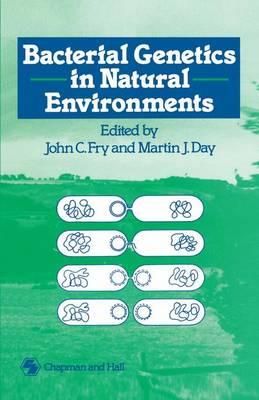Overview
The release of genetically engineered micro-organisms into the natural environment has great potential for agriculture, but much basic research is still needed, particularly in regard to the possible unforseen consequences and risks posed by the transfer of genetic material from one organism to another. This book presents a survey of current thinking on this important topic, synthesizing the genetic and ecological aspects. Following an overview of some general aspects of the study of genetics in natural environments, such as genetic approaches to gene transfer in microbial communities, factors influencing dissemination of DNA by bacterial conjugation, the interaction of phages with their environment, and factors limiting gene transfer in bacteria, aquatic and terrestrial environments are considered in the contexts of these aspects. Plasmid transfer in the epilithon, genetic transfer in the marine environment and in activated sludge, the factors affecting bacterial survival, and laboratory tested methods for investigating genetic transfer in water systems are discussed with reference to the aquatic environment. Similarly, for the terrestrial environment, plasmid transfer between soil bacteria is followed by a discussion of gene transfer in polluted soils and the rhizosphere, and by consideration of the use of a model system in studying gene transfer among micro-organisms. The role of soil bacteria in risk assessment analysis and the use of wide host range promotors to monitor the fate of recombinant DNA in soil, are examined, as is gene transfer between steptomycetes in soil, since these are important for the maintenance of soil fertility. An examination of the survival of genetically engineered organisms with reference to man-made surfaces and animals completes the discussion.
Full Product Details
Author: J.C. Fry ,
M.J. Day
Publisher: Chapman and Hall
Imprint: Chapman and Hall
Edition: 1990 ed.
Dimensions:
Width: 15.50cm
, Height: 1.70cm
, Length: 23.50cm
Weight: 1.250kg
ISBN: 9780412356308
ISBN 10: 0412356309
Pages: 260
Publication Date: 31 August 1990
Audience:
College/higher education
,
Professional and scholarly
,
Postgraduate, Research & Scholarly
,
Professional & Vocational
Format: Hardback
Publisher's Status: Active
Availability: In Print

This item will be ordered in for you from one of our suppliers. Upon receipt, we will promptly dispatch it out to you. For in store availability, please contact us.
Reviews
...this...book is a useful and timely initiation into bacterial genetics in the environment and has much to commend it... Society for General Microbiology; ...the book is well worth reading...the book presents tantalizing glimpses of the current state of knowledge of gene transfer in the environment and whets the appetite for future developments in the field. Trends in Genetics; ...The chapters in this book are of a consistently high standard and give an excellent account of the problems and issues of this area of ecology... Biochemical Systematic and Ecology
...this...book is a useful and timely initiation into bacterial genetics in the environment and has much to commend it... Society for General Microbiology; ...the book is well worth reading...the book presents tantalizing glimpses of the current state of knowledge of gene transfer in the environment and whets the appetite for future developments in the field. Trends in Genetics; ...The chapters in this book are of a consistently high standard and give an excellent account of the problems and issues of this area of ecology... Biochemical Systematic and Ecology




